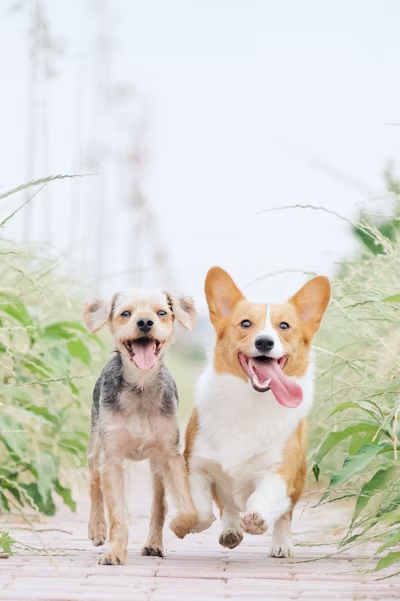Newborn puppies are very endearing. You prefer to cuddle with them all day long and never let them go. Yet it is also very important that these sweet puppies receive the right education in addition to a lot of attention. For example, it is good to let your puppy grow up together with other dogs but also with people. Or also: socializing your puppy. Puppies are great, they dive into everything with 100% enthusiasm and dedication. They discover the world in a playful way with traps and…
Newborn puppies are very endearing. You prefer to cuddle with them all day long and never let them go. Yet it is also very important that these sweet puppies receive the right education in addition to a lot of attention. For example, it is good to let your puppy grow up together with other dogs but also with people. Or also: socializing your puppy.
Puppies are great, they dive into everything with 100% enthusiasm and dedication. They discover the world through trial and error in a playful way. The first weeks are very important in a dog’s life and will form the basis of how the dog reacts to other dogs, people, other animals and unfamiliar situations. That’s why it’s important to let your puppy get as many different impressions as possible in the first few weeks. This way a puppy learns faster what there is to experience, but especially what is and is not allowed.
A puppy’s first weeks
Most puppies are taken away from the litter by the new owner around 8 to 9 weeks. This also means that the puppy is taken away from his or her brothers, sisters and mother after 8 to 9 weeks. So it always takes some getting used to for a young puppy as soon as this happens. It is important to take care of your puppy well and to socialize it immediately with other dogs, but also especially his or her new home. For example, before you pick up your new puppy, inquire at a dog school and sign up for a puppy course. This ensures that you can immediately offer the right education for your puppy.
It is also good to participate in a puppy course with the whole family. This way you ensure that you use the same parenting techniques with the entire family. This makes it a lot easier for the puppy and you will see that your puppy can adapt quickly. A great basis for the family and the puppy!
Make no mistake. The dog school often advises to start puppy training from 15 weeks. This is said because the vaccinations of a puppy are often only effective after 15 weeks, so that the puppy’s resistance is only optimal after that. Nevertheless, we advise you to start training and especially mixing your puppy as soon as possible. Socializing your puppy is very important. Playing with peers progresses your puppy’s development very quickly and is of course much more fun for your puppy!
In addition to following a puppy course, it is also important that you are actively involved in training your puppy. There are many techniques online to train your puppy yourself. For example, you will also find more information here in a previously written blog about potty training your cat or dog. [link]
15 weeks
At 15 weeks, your puppy enters a new phase of life. The curiosity goes off a little bit so that they no longer go on a new adventure with all confidence. They become more reserved for the unknown. Especially for this phase, it is important to let your puppy socialize early on. In an earlier phase, your puppy is still very open to new things, which also makes it easier to learn habits. If you only start puppy training or learning certain manners after 15 weeks, your puppy will find it a lot more difficult to adapt to this.
Some breeders also keep the puppies with the mother longer than 8 to 9 weeks. In this situation, it is especially important that the puppies are well socialized with the mother dog. You can always contact the breeder about this
A puppy or dog course is always educational and good to do, the dog but especially the owners learn to understand the dog according to the latest insights and so you can grow with your dog in a playful way.
Tips from Piet Hellemans at a glance:
- Even before you go to pick up your new animal friend, make contact with a dog school
- Start puppy training as early as possible
- Participate in the puppy course with the whole family
- Let your puppy play and discover as much as possible with peers
- In addition to a puppy course, you can also actively train your puppy yourself
